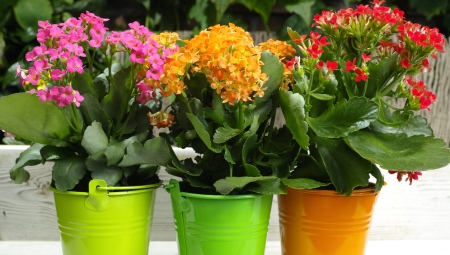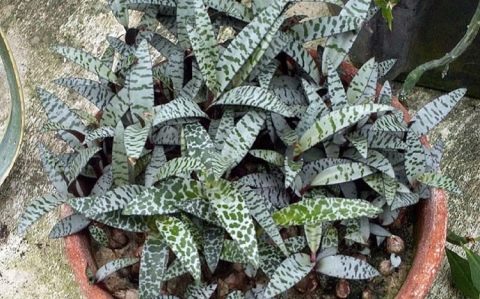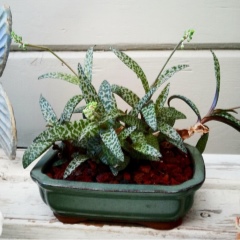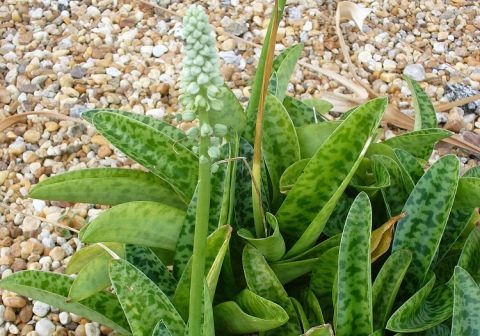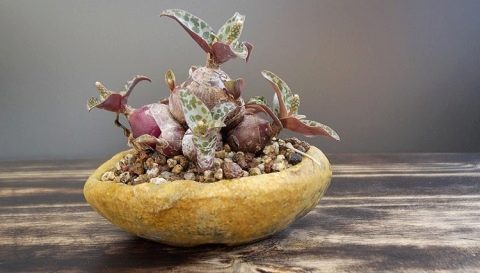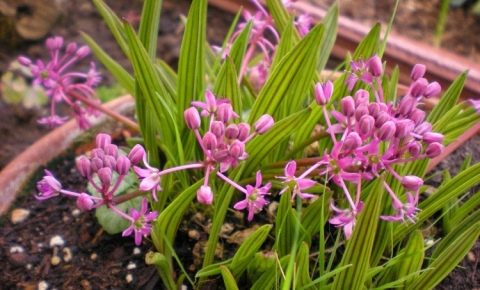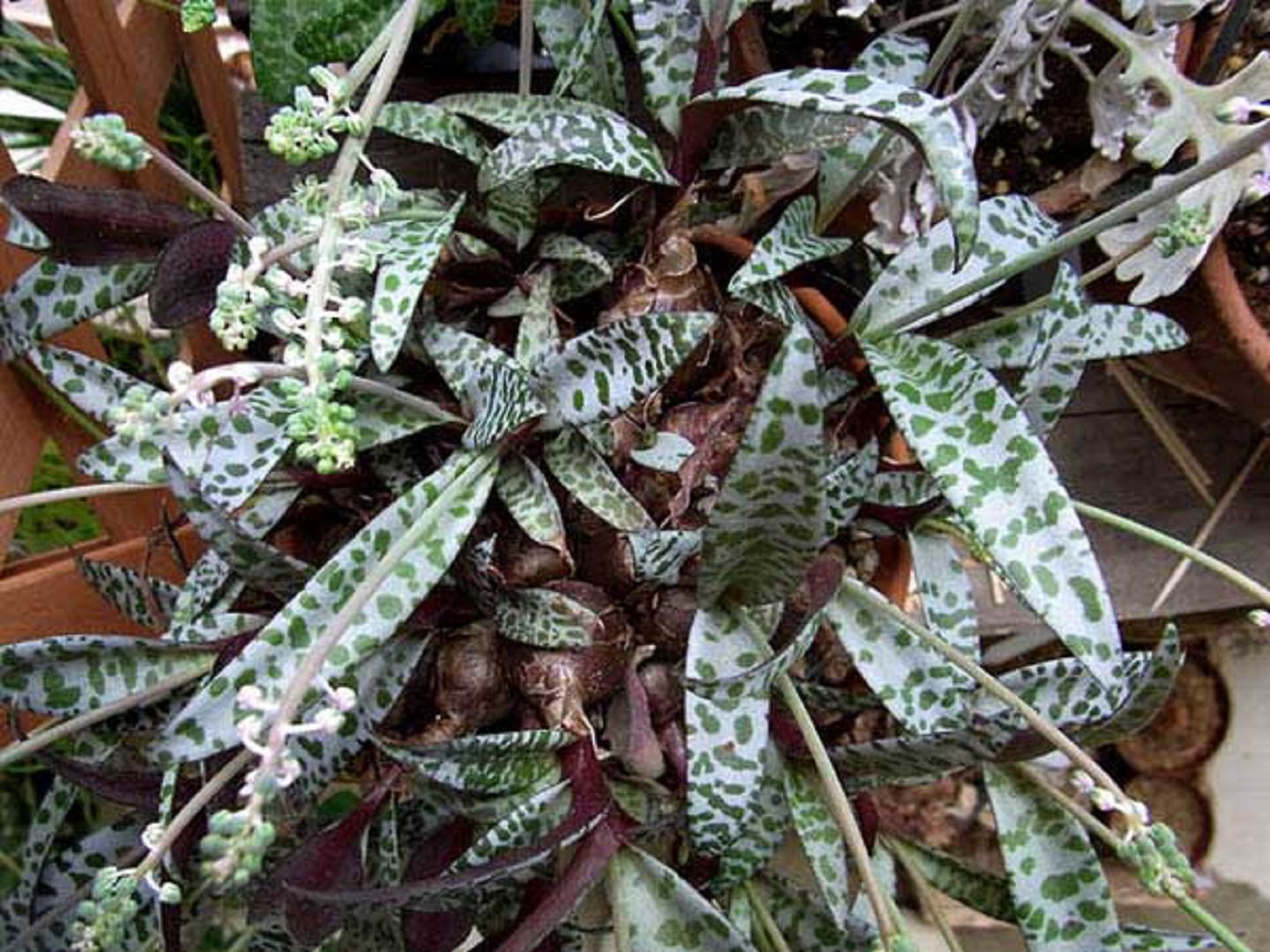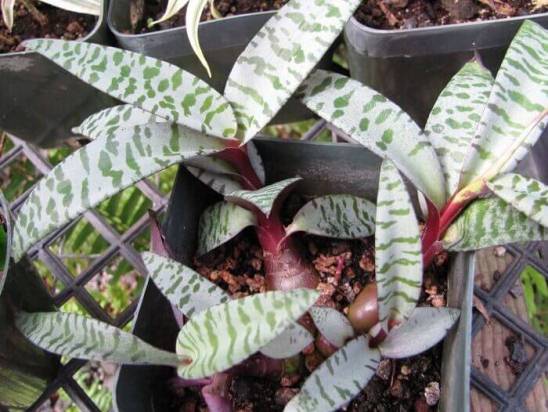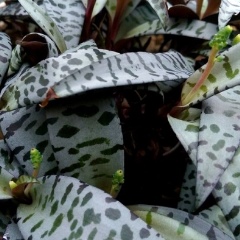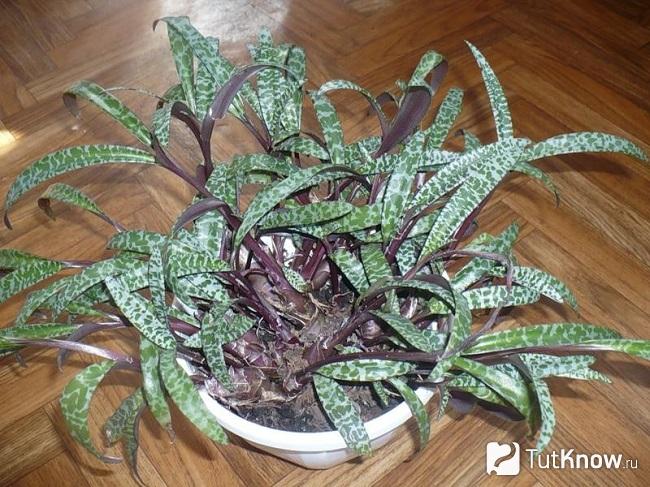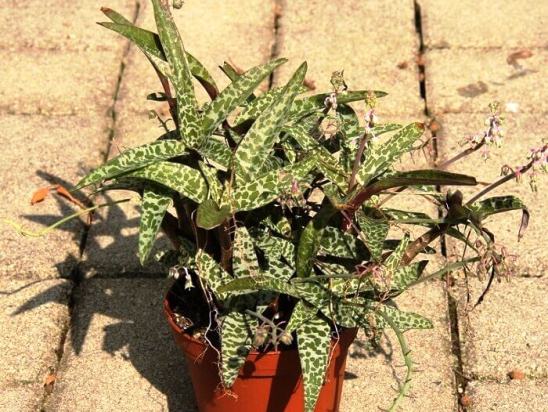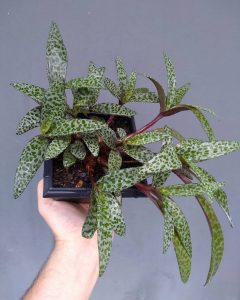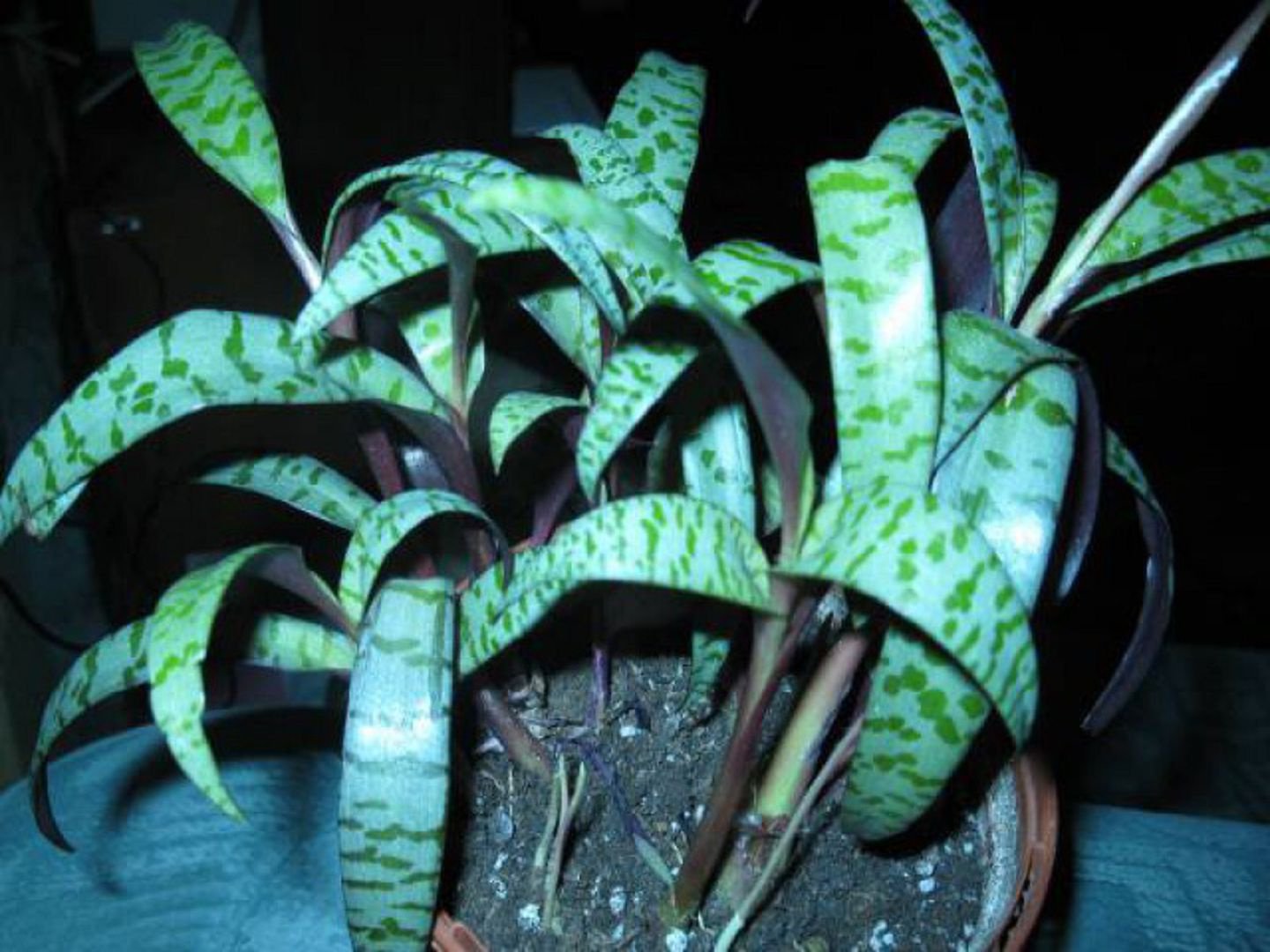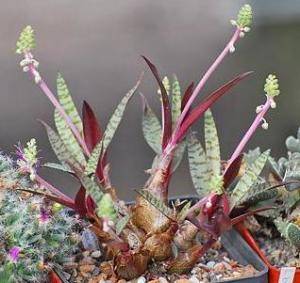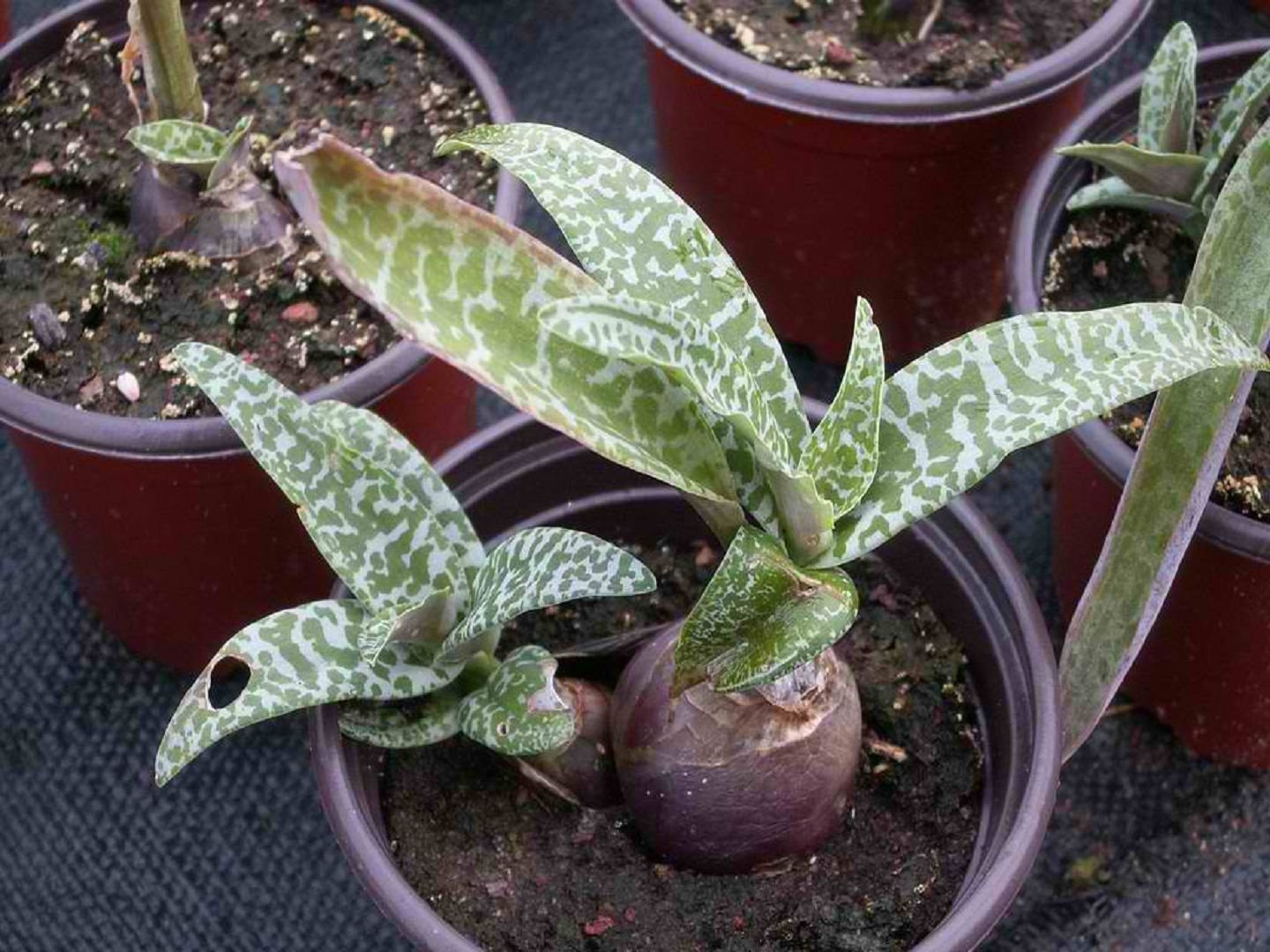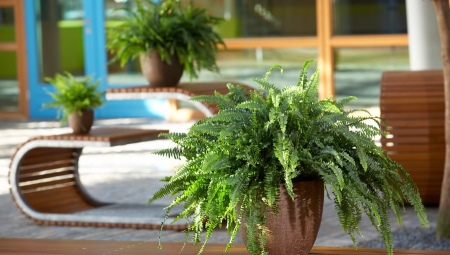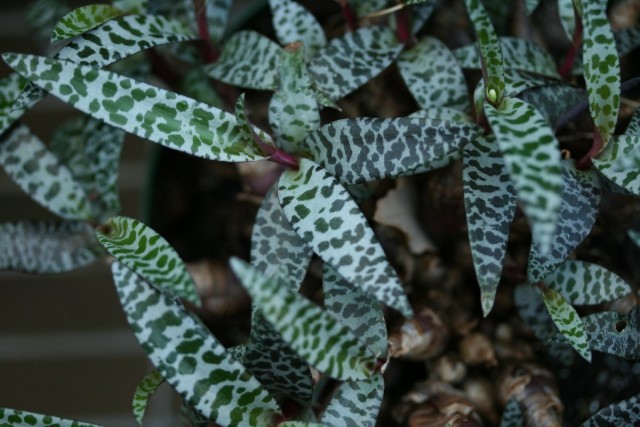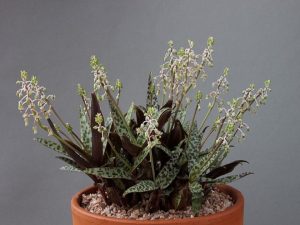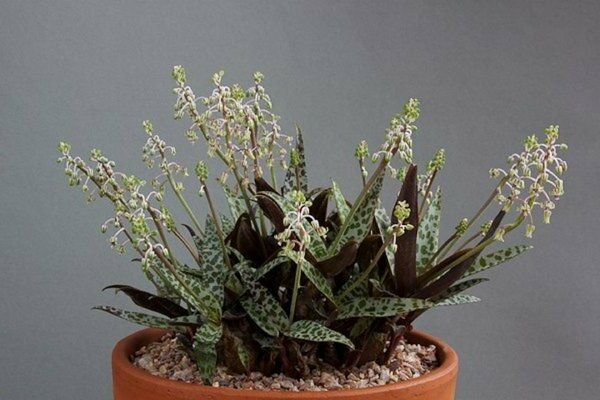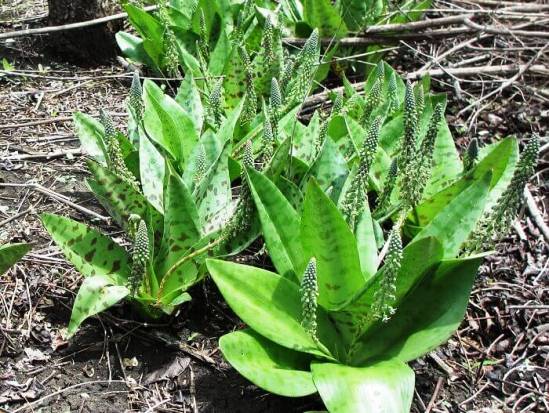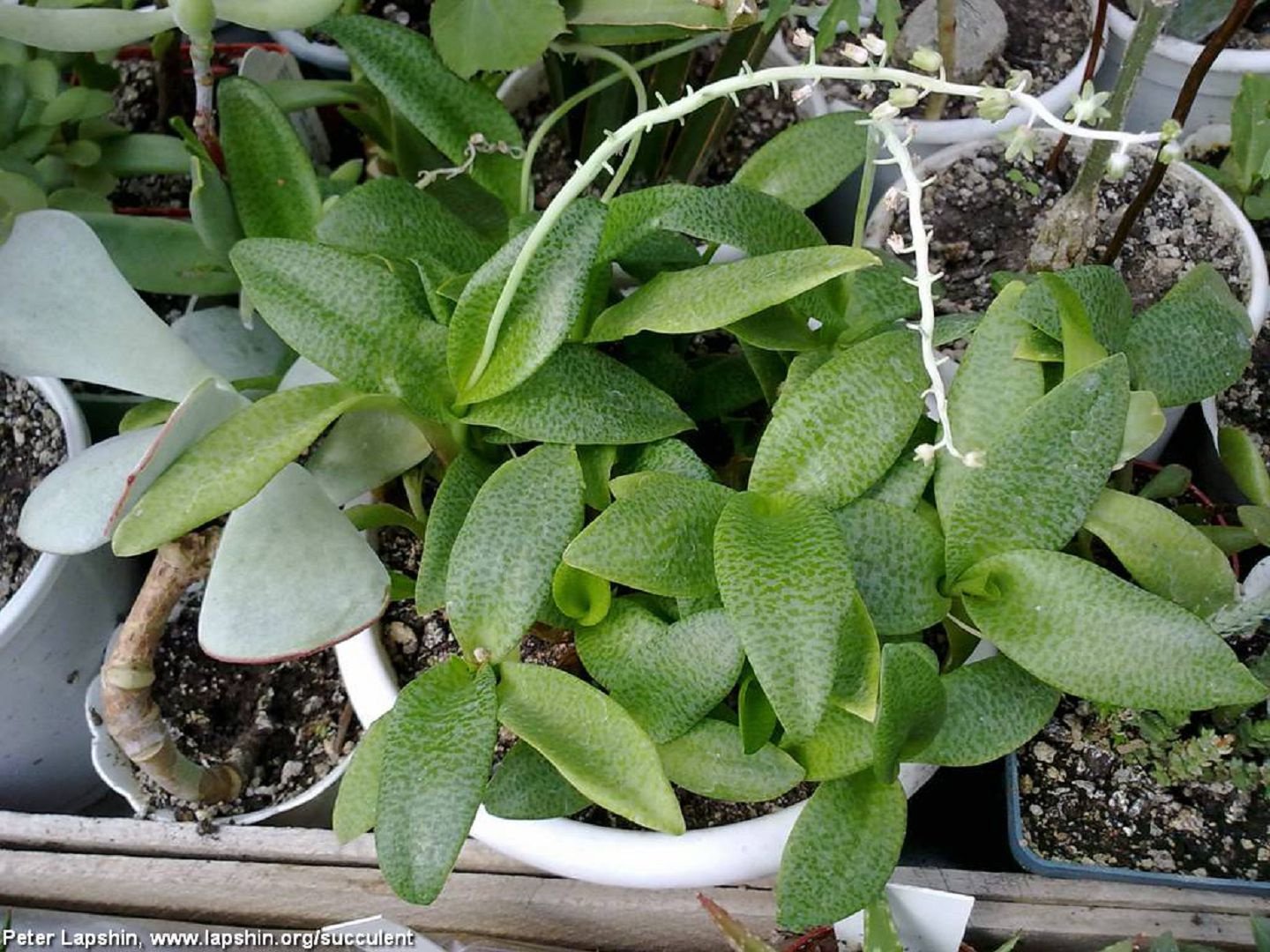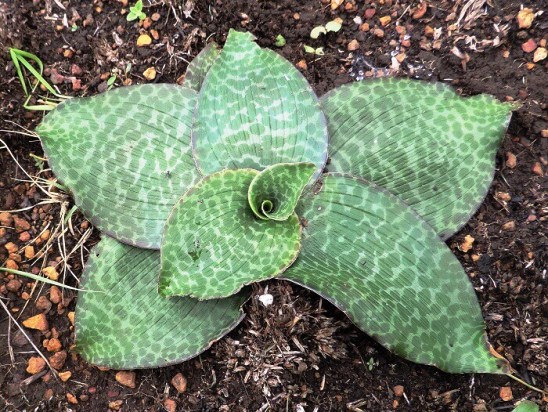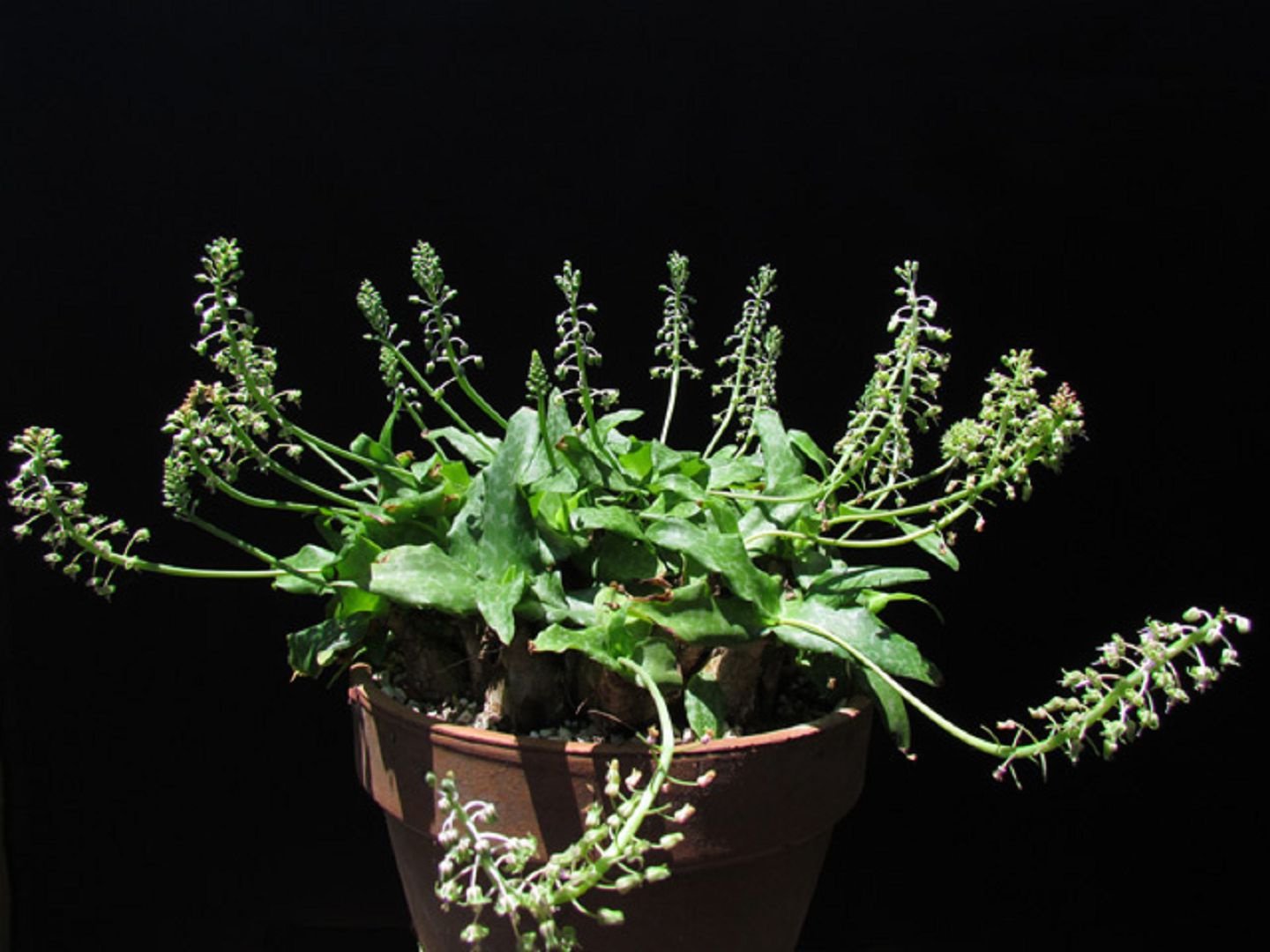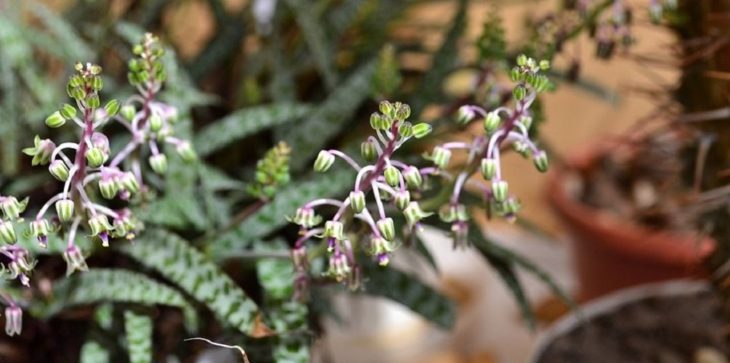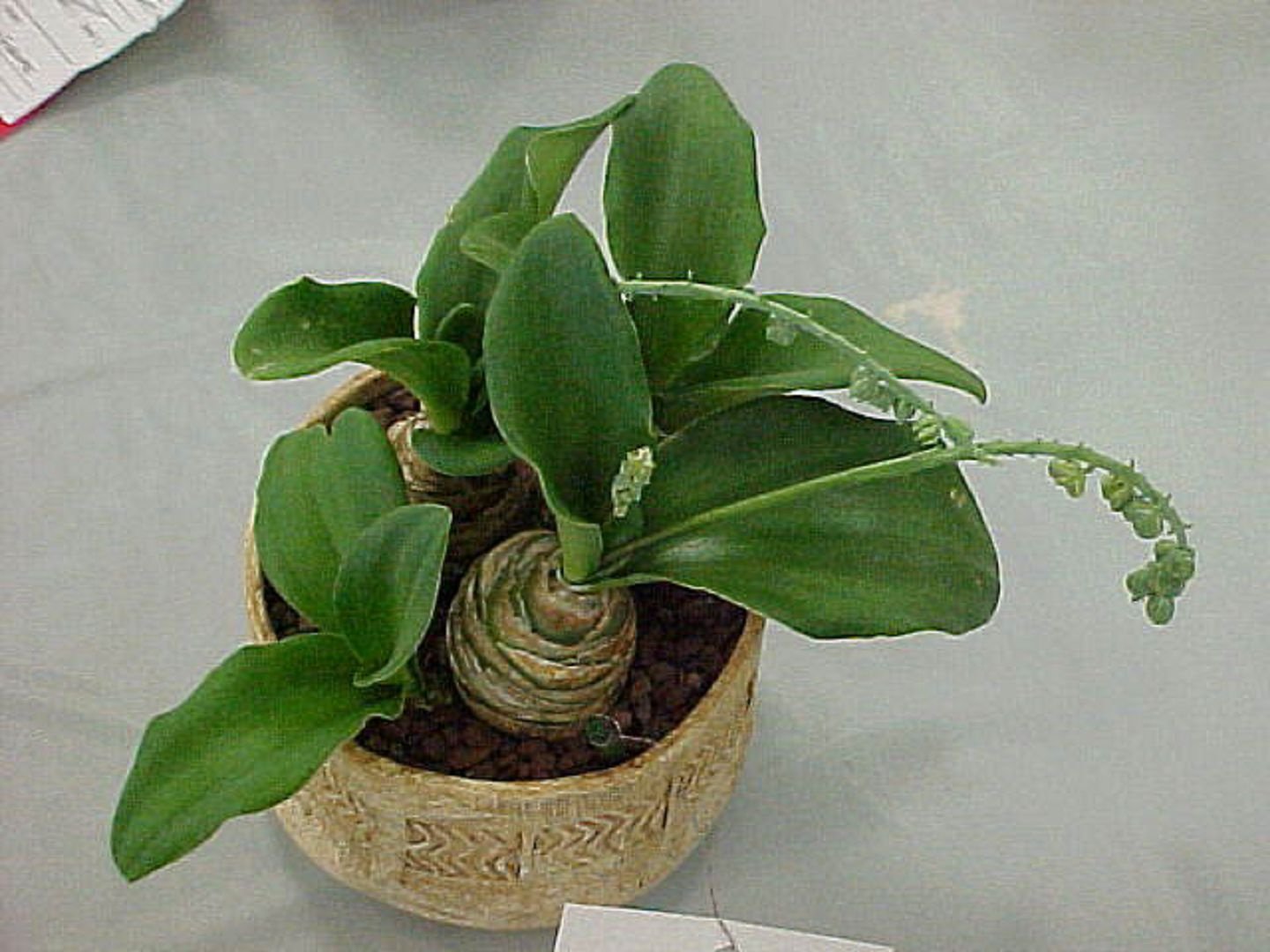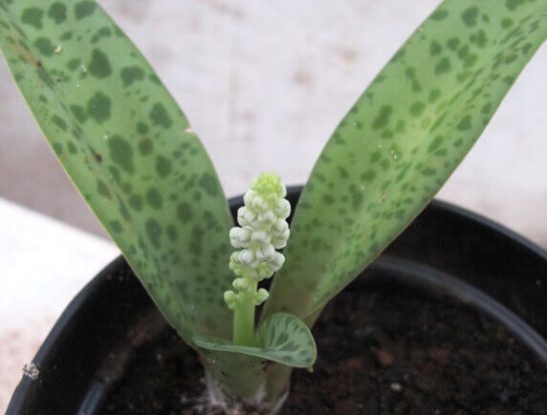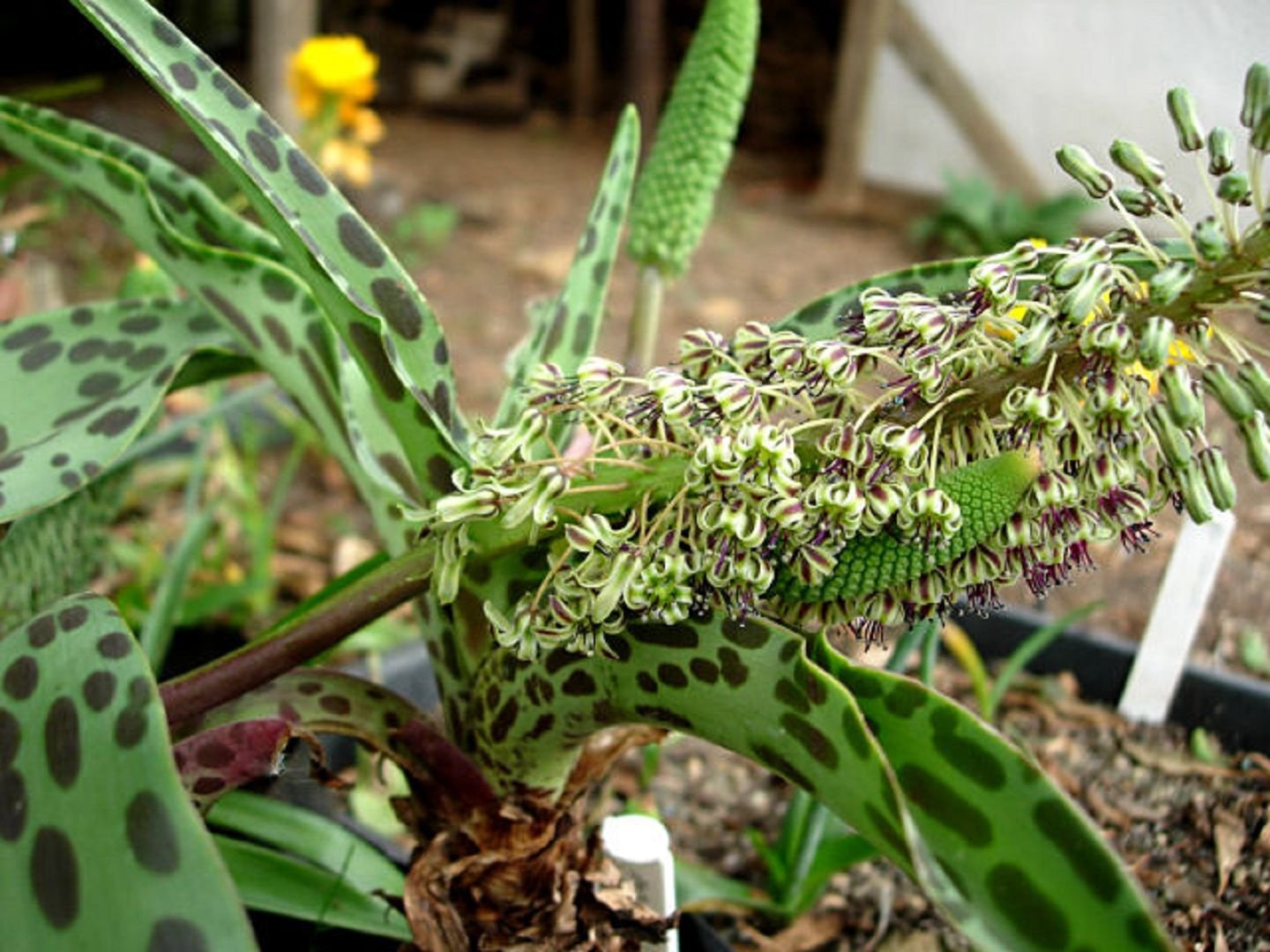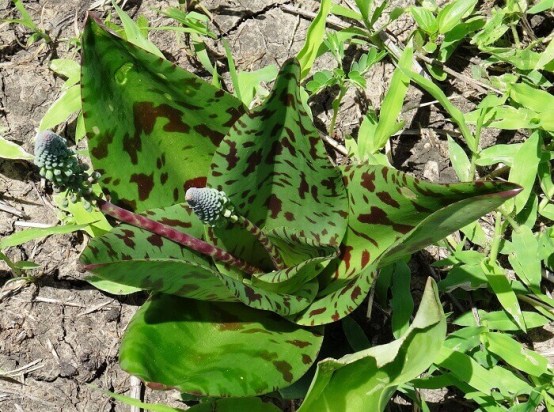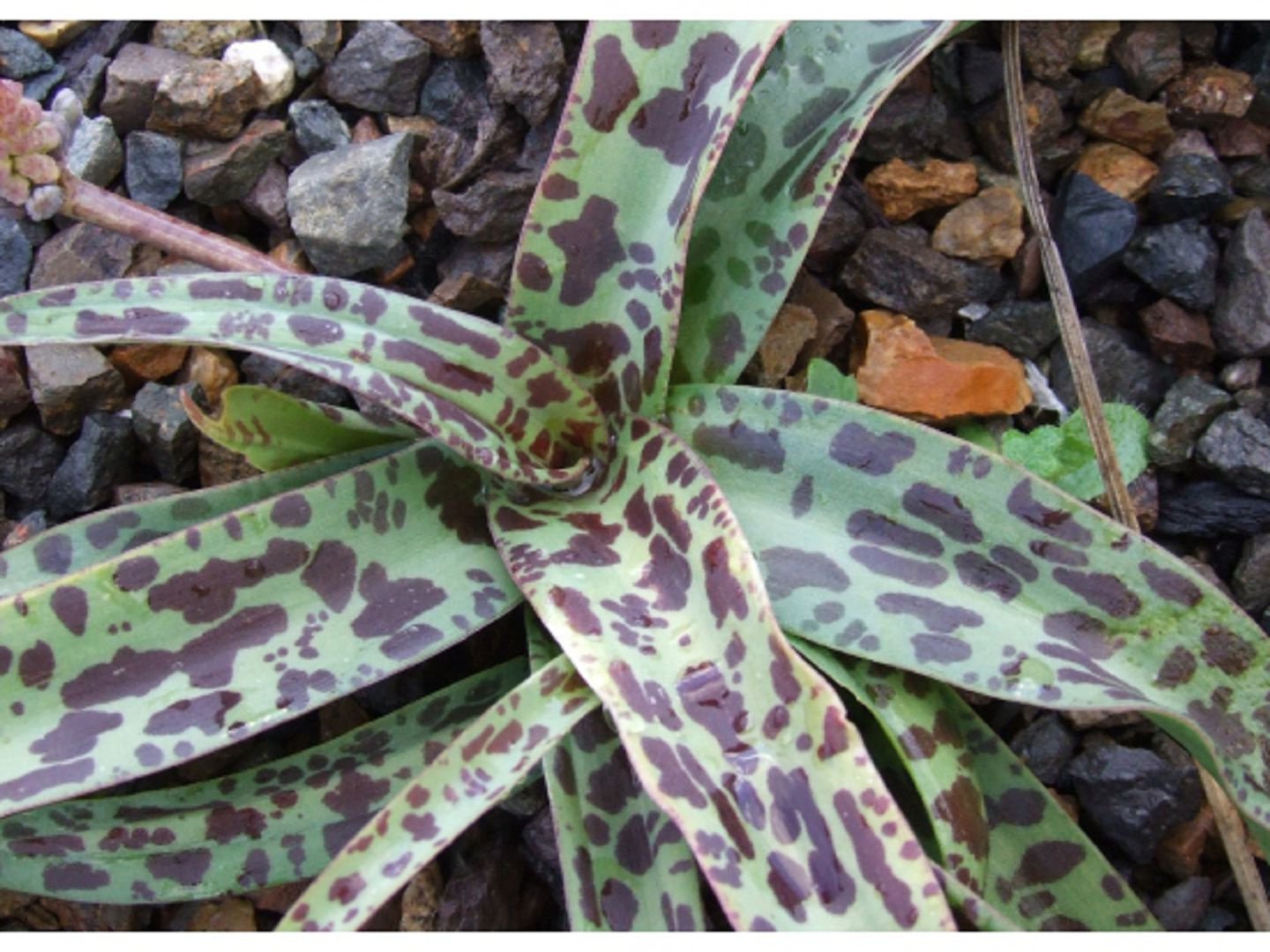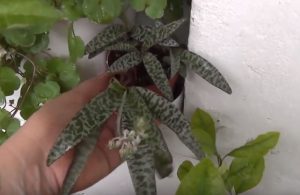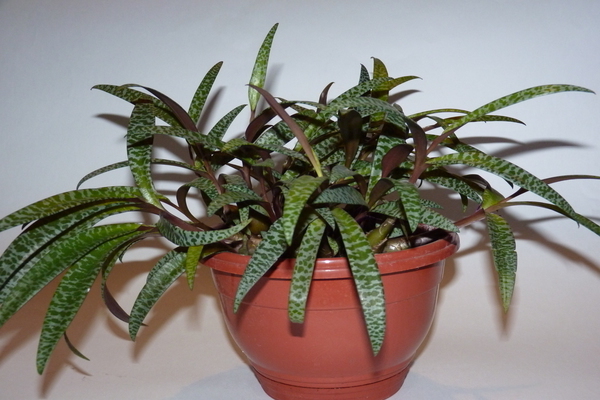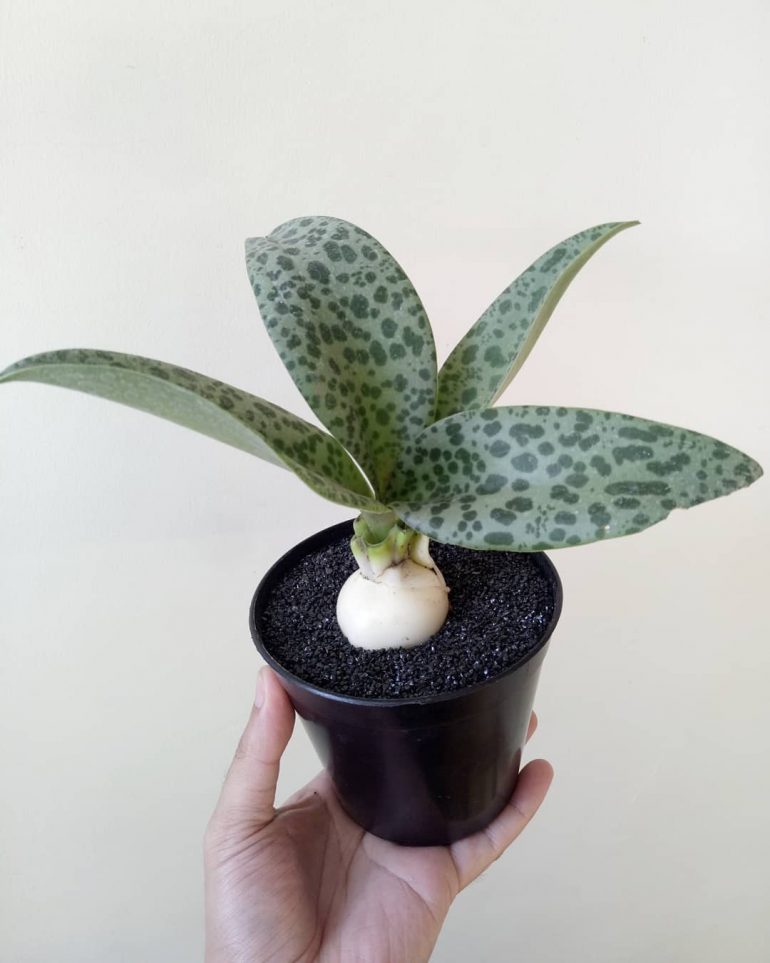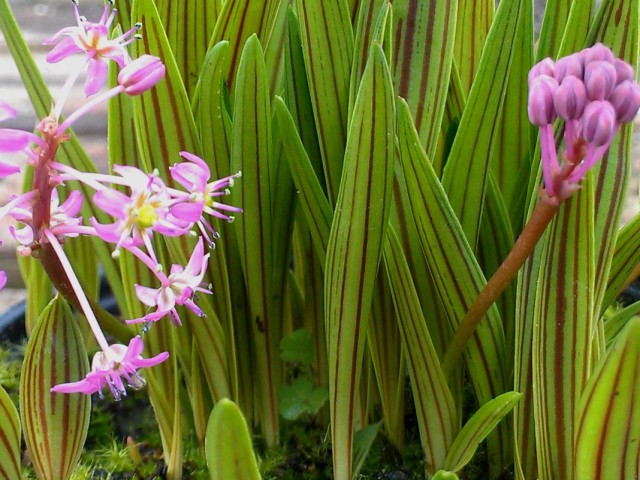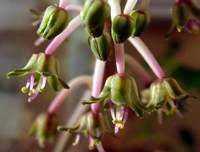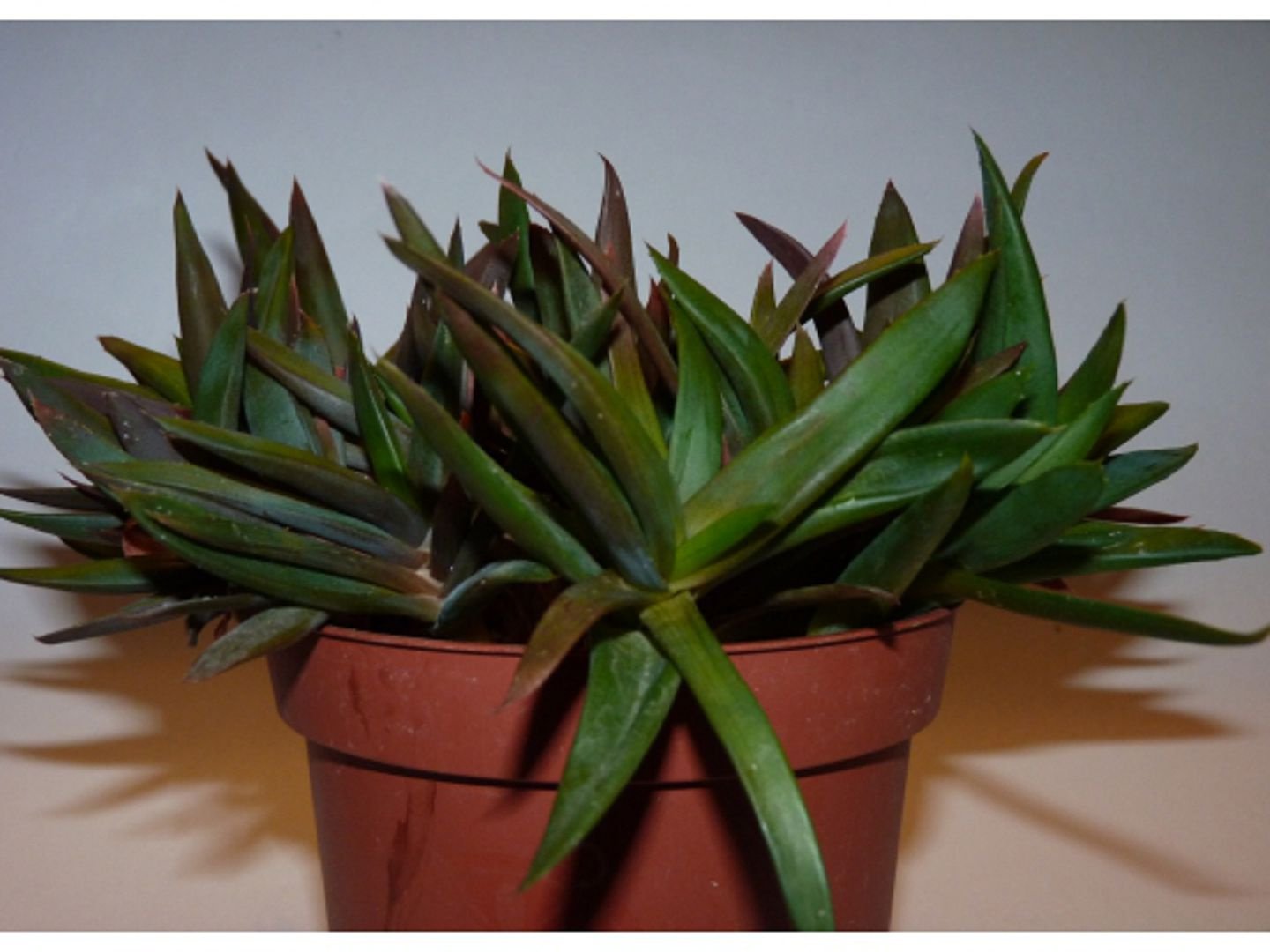Drimiopsis care at home
Its decorativeness depends on the conditions for growing home Drimiopsis. The most important point is that Ledeburia does not tolerate excessively moist soil. Like other bulbous plants, the plant begins to rot in the rhizome and stops developing. Root rot is the most common disease of Scylla and a common cause of the death of perennials. Therefore, the plant is rarely watered, only when the soil dries out. Even in the heat, watering is recommended no more than 1 time in 7 days. During the rest period, water procedures - once every 2-3 weeks. To humidify the air during the heating season, a tray with water or wet pebbles is placed next to the pot.
The leaves of spotted drymiopsis become variegated in bright light. On hot summer days, the plants are shaded from the sun so that it does not leave burns. In the garden season, the scilla is taken out into the street. In winter, it is better to keep the plant on the southern windowsill, hiding it from stuffiness, drafts and direct sun. With a lack of lighting, the leaves turn pale and stretch. With a north orientation, drymiopsis lose their decorative effect.
Signs and superstitions
Ledeburia is often credited with certain mystical "talents." It is believed that if the variegated color of the leaves faded or completely disappeared ahead of time, then someone from the household was jinxed or damaged. It is also believed that in the room where Ledeburia stands, quarrels occur much less often and mutual understanding reigns. She is able to harmonize the situation if there are strangers in the house (friends, relatives, strangers). In addition, the flower is credited with the ability to drive people out of the house who visit it with bad intentions. They begin to feel unwell, unreasonable anxiety or unreasonable fear, which forces them to leave the premises faster. According to Feng Shui, this flower should be placed in the living room to the right of the entrance.
Ledeburia is prized for its decorative leaves, which gradually fill the surface of the pot and form a dense nest of bright greenery with silvery stripes. It lives in the tropical forests of Latin America and has long been actively spread throughout the world. In the middle lane, the Ledeburia flower feels great as a houseplant.

Ledeburia: home care. In detail
Flowering ledeburia
The Ledeburia plant at home usually blooms in mid-spring. At this time, from the center of the leaf rosettes, long dense peduncles appear, crowned with racemose inflorescences, which consist of many small bell flowers of a greenish, purple or purple-pink hue (depending on the variety).
Temperature regime
The optimum temperature for keeping the plant during active growth is + 18- + 22 ° С, during the rest period - about + 14 ° С.
Spraying
Home ledeburia prefers a moderate humidity of the environment, but it can grow in the dry air of city apartments, while it responds well to spraying foliage with clean water at room temperature. The procedure should be carried out once a week.
Lighting
For bright color of leaves and regular active flowering of ledeburia, it is necessary to constantly find it in bright diffused light (with shading from direct sunlight). For plant placement, it is better to choose a south, east or west window.
Anyone can start growing strawberries at home! Grows in a bucket
Watering Ledeburia
Caring for ledeburia at home requires a particularly careful attention to the watering regime. In summer, the plant is watered moderately (once every 5-7 days), arranging short periods of soil drying between waterings. For the winter, watering is reduced to 1 time in 2-3 weeks.Excessive watering is dangerous at any time of the year because it can provoke rotting of the bulbs.
Ledeburia pot
When choosing a pot for ledeburia, preference should be given to large enough wide containers with a drainage hole to remove excess moisture from the roots of the plant.
Priming
Ledeburia can be grown in a special flower soil for bulbous plants or in a soil mixture prepared at home and consisting of garden soil, peat (humus or leaf soil) and river sand (perlite), taken in equal proportions
It is important for the plant that the soil is loose, as well as air and moisture permeable.
Top dressing and fertilization
Ledeburia at home does not need frequent feeding. It needs to be fertilized only during the active growing season once a month with a half dose of any liquid complex flower remedy.
Transfer
Ledeburia is transplanted as needed: when the root system of the plant becomes cramped in the pot or if the quality of the old substrate has significantly deteriorated. Usually, the procedure is carried out every 3 years, even less often for adult specimens. When planting bulbs in a new pot, they cannot be buried completely in the ground, in which case they can rot and the plant will die.
Difficulties in cultivating ledeburia and methods of dealing with them
If the conditions for keeping the plant are violated, then the following troubles arise:
- Multiple dry leaves are formed when there is not enough space in the pot, when Ledeburia has not been transplanted for a long time and its baby bulbs have grown strongly. In this case, it will be necessary to divide the mother plant and plant the delenki in separate containers, while the dried foliage is removed.
- Drying of the tips of the leaf plates indicates a lack of phosphorus or potassium in the dressing. To eliminate this problem, it is necessary to water with water, in which a little potassium permanganate is dissolved, so that the product has a pale pink color. After a couple of days, superphosphate diluted in water is added, at the rate of 3-4 grams of the drug per 1 liter. If necessary, the procedure is repeated. Then it is necessary to regularly feed the ledeburia.
- The plant began to stretch ugly, the color of the foliage acquires a monochromatic shade, and flowering does not occur when the light level is very low. It is necessary to rearrange the pot with the plant to a more illuminated place or carry out additional lighting.
- If brown spots formed on the leaf plates, which quickly become dry, then this is evidence of sunburn.
- With excessive flooding of the soil, the leaves of the ledeburia become sluggish, and it itself loses its turgor, growth stops, and the bulb begins to rot.
- The foliage of the plant falls off, with insufficient soil moisture.
Of the pests, fruit midges, mushroom mosquitoes can be distinguished, which arise when the substrate is excessively moisturized and this can lead to rotting of the bulbs. Anti-camarine agents are used, dichlorvos - against flying representatives, or Aktar and Bazudin - to destroy the larvae in the soil.
Also, harmful insects that cause trouble for ledeburia are: aphids, scale insects, spider mites or mealybugs. If signs of these pests are found: green or grayish small bugs, sticky plaque on foliage (pad is a product of pests' vital activity), a thin cobweb or whitish lumps that look like pieces of cotton wool, then insecticidal treatment is required to destroy these insects and their manifestations.
Reproduction of the indoor plant ledeburia
For the implementation of division, it is best to use the seed method or the method of dividing the curtain. Regardless of which reproduction method you choose, it is best to carry out this procedure at the beginning of the spring, when the plant begins to grow actively. for propagation, all seed must be harvested as early as possible.In a prepared flat pot, they are used by adding a mixture of sand and peat, after which they are lightly moistened and evenly distributed over the soil. Deepening is not necessary. The surface of the bowl must be covered with glass and removed to a warm room. The emergence of the first shoots can be observed in about 2-3 months. You need to know that the plant grows slowly, so re-planting only after only 1-2 months has passed. The Ledeburia flower quickly grows daughter bulbs, which help in creating an attractive picture under the soil. When carrying out a transplant, the lateral bulbs must be separated, after which they are planted in a separate order. Children need to be separated with a sharp blade, after which they need urgent planting in a prepared cake. It is best if you leave the pot with the plant, which will have the bulbs. The container must be covered with a film. The container should be well covered with foil to ventilate the greenhouse. The appearance of leaves can be observed only after 14-19 days. This will indicate that the rooting of the plant went quickly.
The first times you need to ventilate the bus with extreme caution.
Seed propagation
Generative reproduction of drymiopsis or seeds will be a hassle. Planting material is difficult to collect and it quickly loses its germination capacity. However, it can often be found online in Chinese markets. If you managed to purchase ledeburia seeds, then take a universal soil. Any nutrient substrate with an optimal amount of peat and sand for drainage is suitable for germinating Drimiopsis. The soil is moistened and the seeds are scattered over the surface. Cover the container with plastic wrap and place in a warm, bright place. The optimum temperature for germination is + 21..22 degrees. The first shoots will appear in 1-3 weeks. Plants are best dived as they grow and develop very quickly.
Propagation of Drimiopsis by bulbs and cuttings of leaves
As for vegetative propagation, one of two options is used. The first is bulbs. For a year of development, the rhizome tuber grows well. Daughter bulbs are often formed on it. They are separated, and the cuts are treated with crushed coal. The bulbs are planted in separate pots.
Only adult plants with large leaf stalks are cut. The petiole of the leaf plate is cut off. Treat the cut with charcoal to prevent decay. Rooted in a substrate based on sand and peat. You can do this in water. It should be warm - at least +22 degrees. Rooted cuttings are planted in pots with a light substrate.
Planting and transplanting Drimiopsis
These are important points when growing Drimiopsis. Especially if the home culture is self-propagated. Light nutritious soil is suitable for planting. Let's say the same about the transplant. The soil must contain the optimal amount of nutrients. You can collect the composition yourself - peat, sand, humus, deciduous soil, turf; or get it ready-made at a flower shop. Purchased land is mixed with some of the sand.
The container should be wide, but not high. The bulb develops very quickly and therefore requires a lot of space. Clay bowls with heavy drainage holes will do. Drainage should be in a large layer so that the tubers do not rot from excess moisture.
A transplant is required every 2-3 years. Do not allow the annual procedure, otherwise the plant will stop blooming. It may be necessary to urgently transplant and process the bulb if the soil becomes waterlogged.
Description
The genus of the Asparagus family is represented by African bulbous plants with spectacular spotted foliage. In natural growing conditions, there are up to 39 species. They are thermophilic perennial plants that grow throughout the year.Some can periodically shed their leaves, while others are exclusively evergreen, depending on the species.
Large fleshy bulbs of Ledeburia have a rounded shape, brown with a purple tinge, and develop on rhizomes with highly branching roots. Expanding due to the appearance of daughter bulbs, they form whole clumps.
Juicy, wide lanceolate leaves are collected in a rosette at the bulb and are located on very small petioles. The foliage of the representatives of the genus is quite decorative. Above, the leaf plates are green with a silvery tint, strewn with dark spots, and below they have a characteristic violet or purple hue.
In the spring, Ledeburia produces a high peduncle-arrow, on which small and inconspicuous bell-shaped flowers are located, collected in clusters of 20-50 pieces and outwardly similar to the inflorescences of Lily of the Valley. Flowering begins after the bulb has grown and gained sufficient mass.
In culture, representatives of the genus are often used for planting rockeries, and in a potted form - greenhouses and winter gardens. Indoors, Ledeburia looks spectacular in wide pots, and in home gardens - in containers.
Plant propagation
Aubriet is easy to reproduce. There are several ways:
They begin to engage in cuttings after pruning.
The strongest and strongest seedlings are placed in a mixture of sand and peat, for rapid rooting, the plant creates a greenhouse effect. At the end of summer, rooted cuttings are planted in open ground in a prepared place. During this period, they will have time to build up a powerful root system, which will help to cope with severe cold weather.
Reproduction by dividing the bush is used extremely rarely, since it causes irreparable harm to the shave.
You can also propagate Aubrieta by growing from seeds, when it is not possible to plant by cuttings or division. To grow a healthy plant, you need to consider a number of conditions:
- Seeds germinate for a long time, so they are sown a month before the onset of cold weather.
- The seed begins to germinate under a film cover, at a temperature of 19 degrees.
- As soon as the first shoots appear, the covering material is removed, and the plants are planted in a permanent place. The time for transplanting seedlings is warm days without night frosts.
Types of indoor ledeburia
Despite the fact that about four dozen ledeburia are found in nature, only three species have become widespread in room culture.
Ledeburia public (Ledebouria socialis) is the clear leader among indoor species. With a modest height of only up to 10 cm, it stands out with fleshy leaves collected in wide rosettes. Silvery spots cover almost the entire surface of the dark green leaves (so that it begins to seem as if these are dark spots covering the silver leaves). The leaves are lanceolate, bent in an arc, form a bizarre graphic curtain and dense bushes.
The longest peduncles seem to hardly peep through the leaves and bend in different directions. A loose panicle of inflorescences with lilac buds and pale narrow bells of flowers seems to support the color scheme of greenery and perfectly harmonize with the whole plant, emphasizing its beauty with its delicate details.
Ledeburia Cooper (Ledebouria cooperi) is a very attractive species with unusual "striped" greenery and bright lace inflorescences. During flowering, it is impossible to look away from this plant: large, up to 25 cm in length, clusters of inflorescences are quite dense, consist of fifty flowers with a bright lilac-pink color, an elongated narrow tube and magnificent stamens. Graceful and beautiful, the inflorescences seem both catchy and weightless at the same time. But I also want to admire the leaves of the plant.
Reaching a maximum of 10 cm in height, erect, lanceolate-xiphoid leaves flaunt with pointed tips and longitudinal, contrasting with a bright green color with dark purple stripes. The greenery of this ledeburia seemed to be drawn "under the ruler"!
Ledeburia yellow (Ledebouria luteola) is the only Ledeburia in which silvery is combined with yellowish streaks on the leaves. The plant with lanceolate leaves, collected in dense rosettes, seems colorful, cheerful and very elegant. This is one of the miniature Ledeburia with a nondescript openwork flowering, but very bright leaves.
Ledeburia public (Ledebouria socialis) Ledeburia Cooper (Ledebouria cooperi). Grace Peterson Yellow Ledebouria (Ledebouria luteola)
Ledeburia
All right, they calmed the restless brain. Nekhay siii-dit to your health. And I have less trouble. Spring will come - we can bloom.
| Quote |
|---|
| Tatyanka86 writes: Tsur, and bury them completely? Or like Drimiopsis, when all the bulbs are on the surface, and there is one bottom in the ground? |
I don't remember exactly when I bought it in the fall, but on November 20, 2014, after a transplant, it looked like this
in the spring, transplant again
after transplant
did you need to take a bigger pot? I will still remove it from the scorching sun, the leaves have lightened
| Quote |
|---|
| Tsur wrote: Ledeburia never lose its leaves and should not. |
Finally, 13 months after the purchase, Ledebouria zebrina obtained from South Africa, the largest of its kind, woke up from hibernation. Another 2 are still waiting in the wings, too, 14 months. Unfortunately, they think for a very long time. How to "revive" them?
Ledebouria zebrina (rather L. floribunda) obtained from the USA immediately started to grow actively, without any hesitation.
South African Ledebouria ovatifolia woke up after 5 months, grew 2 leaves in three months and fell asleep again. There is a chance that it will enter the climatic seasons of our northern hemisphere, as now there are signs of growth.
How to properly plant and transplant Ledeburia
The frequency of replanting is dictated by the growth rate of the specimen. For young individuals, an annual housewarming is usually required, adult plants, the further growth of which is not foreseen, can be transplanted every 3 years. The signal for transplanting should also be the bulging of the root bulb system above the surface of the pot.
When transplanting, the bulb is placed vertically and superficially, a thick layer of soil over days will interfere with development. Too dense curtains must be divided during transplantation. The best time for the procedure is traditionally early spring.
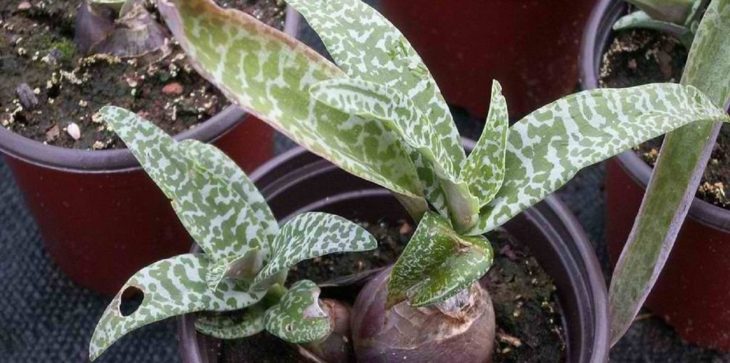
More light - more decorative
Ledeburia is a light-loving plant. For its normal growth and development, direct sunlight is desirable for at least a few minutes a day. Only if the plant receives enough of the required light does it become as decorative as possible.
Ledeburia grows well on eastern and western windowsills, which are illuminated by sunlight. The southern ones are even better illuminated, but on them, in poorly ventilated rooms, the plant needs shading of the midday sun.
In natural conditions, Ledeburia grows in dry areas, mainly on the banks of the rivers of South Africa.
Its bulbs have the ability to store moisture and nutrients and use them sparingly during dry periods. Therefore, watering it in spring and summer should be infrequent and always only when the surface layer of the substrate dries up.
But the warmth of Ledeburia is calm. In summer, it is content with the usual room temperature in the range of 17-23 ° C. She loves fresh air, so frequent (without strong drafts) airing is desirable for her. In spring and summer, it feels good on light balconies and loggias.
Winter vacation for summer bloom
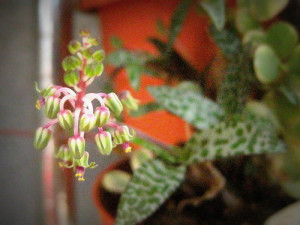 Ledeburia can hibernate at normal room temperature. But if it is regularly watered in winter as well as in summer, it will continue to vegetate at this time. This should not be allowed.
Ledeburia can hibernate at normal room temperature. But if it is regularly watered in winter as well as in summer, it will continue to vegetate at this time. This should not be allowed.
First, due to a lack of light, the plant will form long and thin shoots with poorly colored leaves, which impair its appearance.
Secondly, after the winter growing season, it may not bloom.In order for the growth processes to temporarily stop, the ledeburia should be found in a cooler place with a temperature of 12-16 ° C, then it stops growing and it begins a period of rest.
The resting Ledeburia is rarely watered, allowing the earthen coma to dry out completely between waterings. And even if it remains dry for several days, this does not harm the plant and does not adversely affect decorativeness.
Drying of the lower leaves can only be caused by prolonged (more than 10-15 days) drying of the substrate. You should not be afraid of this, since new leaves will grow from the bulbs in the spring.
Unpretentious and fertile
 Ledeburia grows slowly, therefore, it consumes little nutrients. During the active growing season, one feeding per month with liquid fertilizer for cacti, which contains relatively little nitrogen, is enough for her.
Ledeburia grows slowly, therefore, it consumes little nutrients. During the active growing season, one feeding per month with liquid fertilizer for cacti, which contains relatively little nitrogen, is enough for her.
Ledeburia is undemanding to the substrate and can grow in almost any sufficiently nutritious soil, including a fairly dense garden soil containing a significant amount of clay.
Due to inactive growth, the plant can be for a long time (within 3-4 years) without transplanting in the same fairly wide and flat pot, the diameter of which is much greater than the height. It needs to be repotted when the overgrown bulbs become cramped.
Ledeburia is propagated by seeds and separation of bulbs. Since the plant easily forms daughter bulbs, it is rational to propagate it vegetatively.
Daughter bulbs can be detached at any time of the year, but best in spring and summer. They are planted shallow, so that they almost completely protrude on the surface. This method of planting will help prevent bulbs from rotting in the future.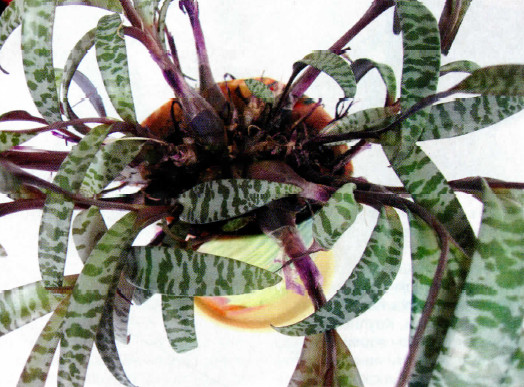
Subscribe to new articles! Thank you for the attention
Ledeburia: types
The Ledeburia flower includes about 40 different species; a number of varieties are used in culture.
Cooper. It is a compact semi-deciduous plant. The height of the bushes is no more than 10 cm, the width is no more than 5 cm. The basal erect leaves are distinguished by an oval shape and pointed edges. Contrasting purple stripes can be clearly seen along the entire length of the leaves. The inflorescences are dense, the height does not exceed 25 cm, includes flowers of a bright pink hue, in which the petals and long stamens are wide open. Each flower has a diameter of up to 6 mm.
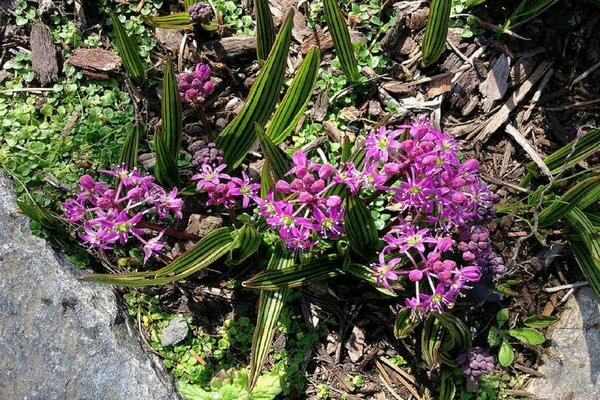
Ledeburia: photo of flowers
Public ledeburia (ledebouria socialis). The height of this variety does not exceed 10 cm. The foliage is fleshy, collected in wide rosettes. The leaf plate is smooth, has silver and dark green spots on its surface, located transversely. Basal broad-lanceolate leaves of public ledeburia have a length that will not exceed 10 cm. The dense peduncle is located above the rosette, with a length of no more than 20-25 cm. Paniculate inflorescences have purple small buds.

Public ledeburia: photo by ledebouria socialis
Luteola. Bushes are compact in size, include dense leaf rosettes. Lanceolate leaves have yellow-green streaks and dark green spots.
How to carry out independent reproduction of Ledeburia?
It is possible to get a new plant with variegated foliage by dividing the mother bush (separating the bulbs) or sowing seeds.
Seeds should be sown immediately after harvest as they may lose their germination. It is recommended to carry out this operation in the springtime - in March, when the growth of vegetative activity begins. A peat-sand substrate is poured into the container and slightly moistened with a spray bottle. Then the seed is spread over the top. You do not need to cover the seeds. It is recommended to cover the pots from above with a piece of glass or wrap them in a plastic bag. Then the container with the crops is placed in a warm place. The first shoots will appear in 2-3 weeks.The growth rate of seedlings is very slow and they will be ready for the next transplant only after 1–2 months.
A simpler way of reproduction is considered to be the separation of onion babies from the maternal ledeburia. It is possible to carry out such an operation, regardless of the season. After the bulbs are carefully separated (a sharp knife or blade is used for cutting), they are planted in separate pots in a soil suitable for the plant. It is recommended to deepen them by only 1/3. After 12-16 days (maximum in a month), baby bulbs take root successfully. If you want this process to be accelerated, then the pot with "young" should be placed in a warm place with a heat of about 22 degrees. It is also necessary to create the conditions for a mini-greenhouse by wrapping the pot in a plastic bag or placing the plants under a glass vessel. It is recommended not to forget about daily ventilation and, if necessary, moistening the soil. The formation of young leaves is a signal of successful rooting. After that, the shelter is removed and the plant is accustomed to indoor conditions.
Sometimes the plant is propagated by dividing an overgrown bush.

